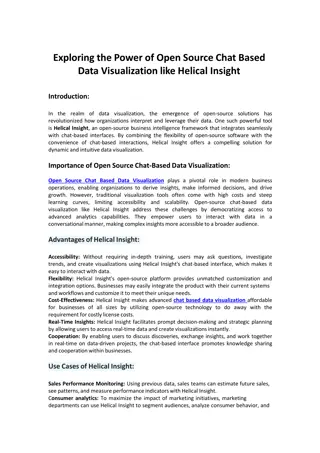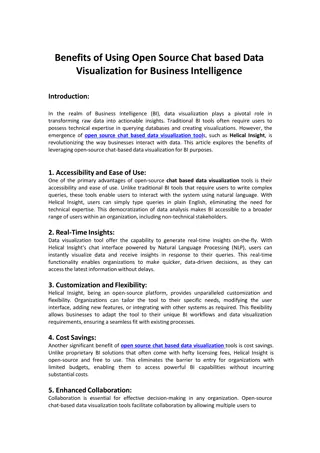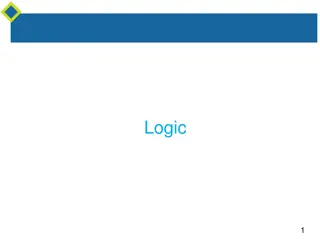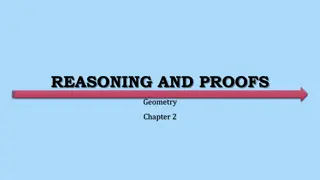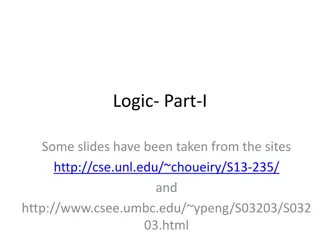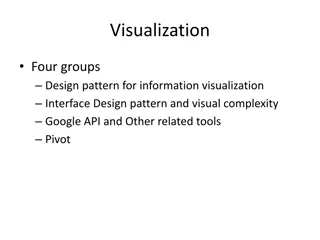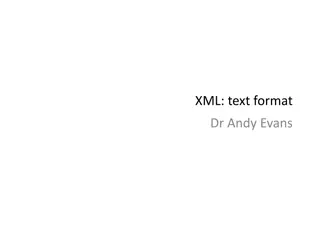Data Visualization: False Statements, Differences, and Formats
Discover false statements about data visualization, differences between computer graphics and data visualization, and various graphical formats for analyzing data. Test your knowledge with interactive quizzes using finger signals instead of verbal responses.
Uploaded on Mar 04, 2025 | 0 Views
Download Presentation

Please find below an Image/Link to download the presentation.
The content on the website is provided AS IS for your information and personal use only. It may not be sold, licensed, or shared on other websites without obtaining consent from the author.If you encounter any issues during the download, it is possible that the publisher has removed the file from their server.
You are allowed to download the files provided on this website for personal or commercial use, subject to the condition that they are used lawfully. All files are the property of their respective owners.
The content on the website is provided AS IS for your information and personal use only. It may not be sold, licensed, or shared on other websites without obtaining consent from the author.
E N D
Presentation Transcript
UNGRADED QUIZ Unit 3
Show me your fingers Do not shout out the answer, or your classmates will follow what you said. Use your fingers One finger (the right finger) = A Two fingers = B Three fingers = C Four fingers = D No finger = I don t know. I didn t study
1. Which of the following statement about data visualization is false? A. Both EDA and data mining heavily utilize data visualization. B. Static graphs are not useful in exploratory data visualization. C. Data visualization is about data reduction and thus the analyst should always produce a highly parsimonious depiction of the data. D. In data visualization, the graphical type, the research goal, and the data structure should fit each other.
2. What is the major difference between computer graphics and data visualization? A. Usually computer graphic designers illustrate an known subject matter but data visualizer do not know what the final graph looks like until the exploration is finished. B. Usually computer graphics aim to impress the audience by fancy graphs but data visualizers might use simple graphs to present useful information. C. Both A & B.
3. Which of the following statements is false? A. R. A. Fisher downplayed the value of statistical graphs by saying that diagrams prove nothing. B. Anscombe showed that different data sets could procedure the same statistics (e.g. r and R-square). C. Both earlier data visualizers, such as Charles Minard and John Snow, used quasi-GIS methods for illustration or data analysis. D. General Motors accepted Edwards Deming s advice on total quality management.
4. Which graphical format allows you to see the density (concentration) of the data? A. Scatterplot B. Median smoothing box-plot C. Image plot or heat map D. All of the above
5. Which graphical format allows you to compare group difference? A. Diamond plot in JMP B. ANOM in JMP C. Least-square mean plot and Diffogram in SAS D. All of the above
6. Which graphical format allows you to visualize the result of Chi-square analysis? A. Scatterplot B. Mosaic plot C. Dot plot D. B & C
7. Which of the following is/are prominent data visualizers and their books are considered seminal? A. John Tukey B. William Cleveland C. Edward Tufte D. All of the above
8. Which of the following statement is not made by Edward Tufte? A. What is to be sought in designs for the display of information is the clear portrayal of complexity. B. The wonderful becomes familiar and the familiar wonderful. C. Numbers can fool your mind but graphs cannot fool your eyes. D. None of the above.
Answers (1) C (2) C (3) D (4) C (5) D (6) D (7) D (8) C





